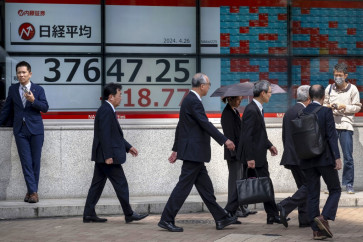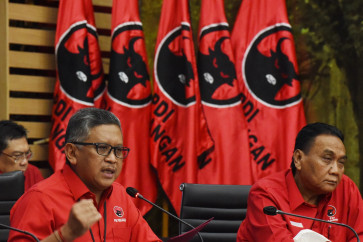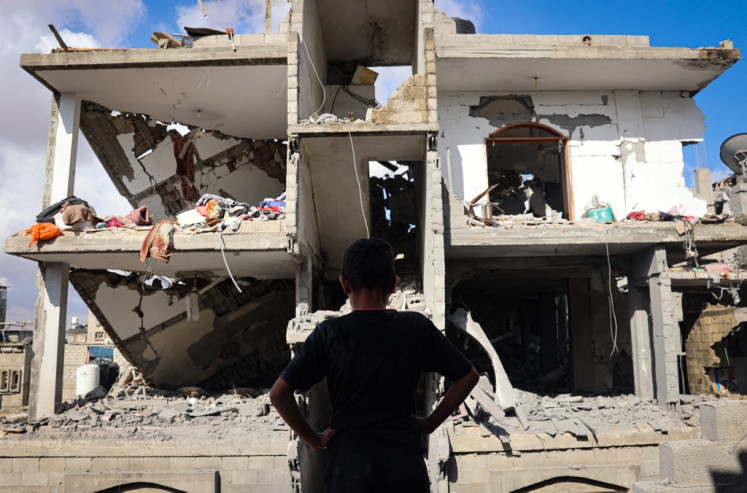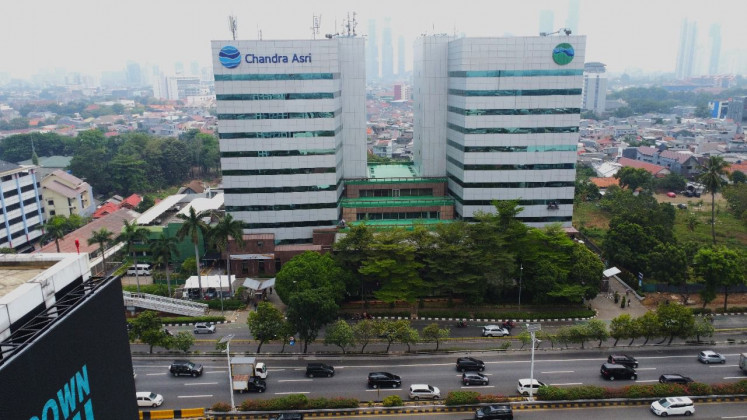Country reaps more benefits of circular economy
A circular economy is generally understood as a production and consumption model that aims to extend the life cycle of any product through reusing and recycling, with the primary objective to reduce waste to a minimum.
Change Size
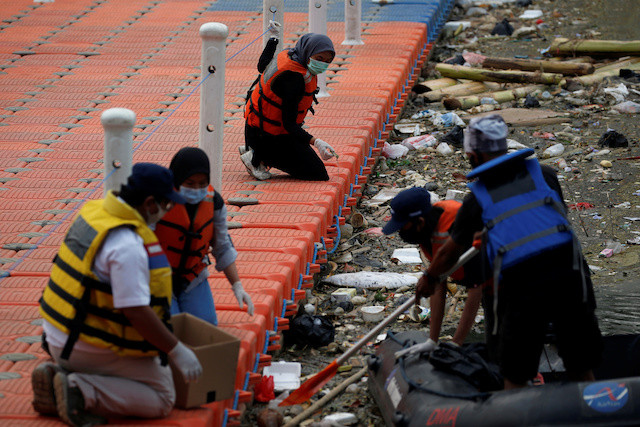
I
ndonesia is starting to reap more economic benefits as it implements circular economy principles, although the country still has a lot of room to improve its waste collection and management, a ministry official has said.
A circular economy is generally understood as a production and consumption model that aims to extend the life cycle of any product through reusing and recycling, with the primary objective to reduce waste to a minimum.
Data compiled by the Environment and Forestry Ministry revealed that in 2019-2020, more than 420,000 tons of plastic waste were collected from waste banks, temporary disposal sites (TPS) and plastic waste collected by scavengers, among other means. Recycling this plastic waste had generated more than Rp 1 trillion (US$70.53 million) of revenue, according to the data.
Over the same period, around Rp 7.4 trillion of revenue was also generated from recycling more than 3 million tons of paper waste.
Environment and Forestry Ministry’s waste management director general Rosa Vivien Ratnawati said a circular economy model had been incorporated into the directorate’s strategic plans, with the aim to expand the implementation of a circular economy across the country.
“When we talk about a circular economy, the life cycle of products is no longer cradle to grave but cradle to cradle,” said Rosa in a discussion on Wednesday.
Rosa added that mainstreaming circular economy principles, including by improving waste collection efforts, was essential to support the growth of the domestic recycling industry.
According to the ministry’s estimations, Indonesia produces 19.66 million tons of plastic and paper waste per year. However, only about 46 percent of this waste is absorbed by the recycling industry.
The figure was more than double the recycling industry’s annual needs, which are estimated at 7.6 million tons of materials per year. However, sluggish waste collection efforts have prompted the industry to import around 3.4 million tons of materials per year to meet its needs.
According to a ministry survey in 2020, only about eight regencies and cities had proper waste management, while over 400 others, 91 percent of more than 500 cities and regencies across Indonesia, did not have proper waste management facilities.
Rosa said the situation was partly because the 2014 Regional Autonomy Law stipulates that all regional administrations in the country should manage waste generated in their respective areas. The regulation, however, does not list waste management as an essential public service, leaving regional administrations to focus their resources elsewhere.
“Because [waste management] is not listed as a public service, the regional administrations could deprioritize it [in favor of other priorities],” said Rosa.
Read also: Govt aims to triple plastic waste collection by 2030 to spur recycling
In July, the environment ministry unveiled a plan to end plastic waste imports by 2030 by increasing the collection of consumer waste. The ministry aimed to increase domestic consumer waste collection to 1.74 million tons by 2023.
The move was in line with goals set in the Presidential Regulation (Perpres) No. 97/2017 to cut waste by 30 percent and marine plastic debris by 70 percent by 2025 relative to a business-as-usual scenario.
At the current pace, Indonesia is on course to produce 70.8 million tons of annual waste by 2025. With the aim to reduce 30 percent of waste by 2025 under the 2017 regulation, the government has also targeted the remaining 70 percent to be processed through recycling and other waste treatment products.
Director of Bandung-based Bank Sampah Bersinar Fei Febri said waste banks could be a direct solution to the waste management problem, saying that such social initiatives could be utilized to educate the public on waste management and on financial literacy, as people could also be educated to see the economic value of their waste.
She said one of the challenges for waste management businesses like waste banks was how to stay financially afloat and sustain their business.
“We have come to a solution by simply giving the best prices for our customers. If they knew of someplace else that would pay more, we would offer more, hence people would be more interested in coming to waste banks,” she said.
As of 2020, Indonesia had more than 11,000 waste banks spread across the country, which had served more than 400,000 customers and booked more than Rp 4.5 billion in annual revenue, according to the ministry’s data.


